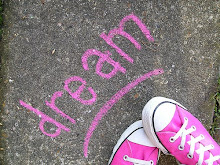Opening Ceremonies (Berlin,1936)
Adolf Hitlers Olympic commence , and a young athlete-Eduard Reichman- dedicates his life to his Fiehrer.
Paraguay , 1976
In a daring raid on a secret Nazi shrine,three invaders die.One -Aaron Miller - escapes with an awesome relic : the urn containing Hitler's ashes. Now the terrified Nazi chieftains have st to loose Das kettenhunsd to retrieve it-Hitlers "Chain dog "Eduard Reichman.But Reichman has a plan that recquires the death of a world leader...a plan that wil pit him against the secret agents of several nations...against his fellow Nazis..against hts own fellow long-thwarted needs ... against a beautiful , tormanred Nazi hunter...and against a vengeance-obsessed American named Aaron Miller. Soon they will meet.In an unscheduled Olympic contest-to-the-death.In the final seconds of the closing ceremonies.
Thursday, November 27, 2008
Closing Ceremonies
Posted by ♥Lyn♥ at 11:10 PM 0 comments
Atomic Theory
Atomic theory is a theory of the nature of matter, which states that matter is composed of discrete units called atoms, as opposed to the obsolete notion that matter could be divided into any arbitrarily small quantity.John Dalton developed his atomic theory in which he proposed that each chemical element is composed of atoms of a single, unique type, and that though they are both immutable and indestructible, they can combine to form more complex structures .Atoms were thought to be the smallest possible division of matter until 1897 when J.J Thomson discovered the electron through his work on cathode rays.Thomson's plum pudding model was disproved in 1909 by one of his students, Ernest Rutherford, who discovered that most of the mass and positive charge of an atom is concentrated in a very small fraction of its volume, which he assumed to be at the very center.In 1918, Rutherford bombarded nitrogen gas with alpha particles and observed hydrogen nuclei being emitted from the gas. Rutherford concluded that the hydrogen nuclei emerged from the nuclei of the nitrogen atoms themselves (in effect, he split the atom).[19] He later found that the positive charge of any atom could always be equated to that of an integer number of hydrogen nuclei. This, coupled with the facts that hydrogen was the lightest element known and that the atomic mass of every other element was roughly equivalent to a whole multiple of hydrogen's atomic mass, led him to conclude hydrogen nuclei were singular particles and a basic constituent of all atomic nuclei: the proton.
Posted by ♥Lyn♥ at 11:02 PM 0 comments










